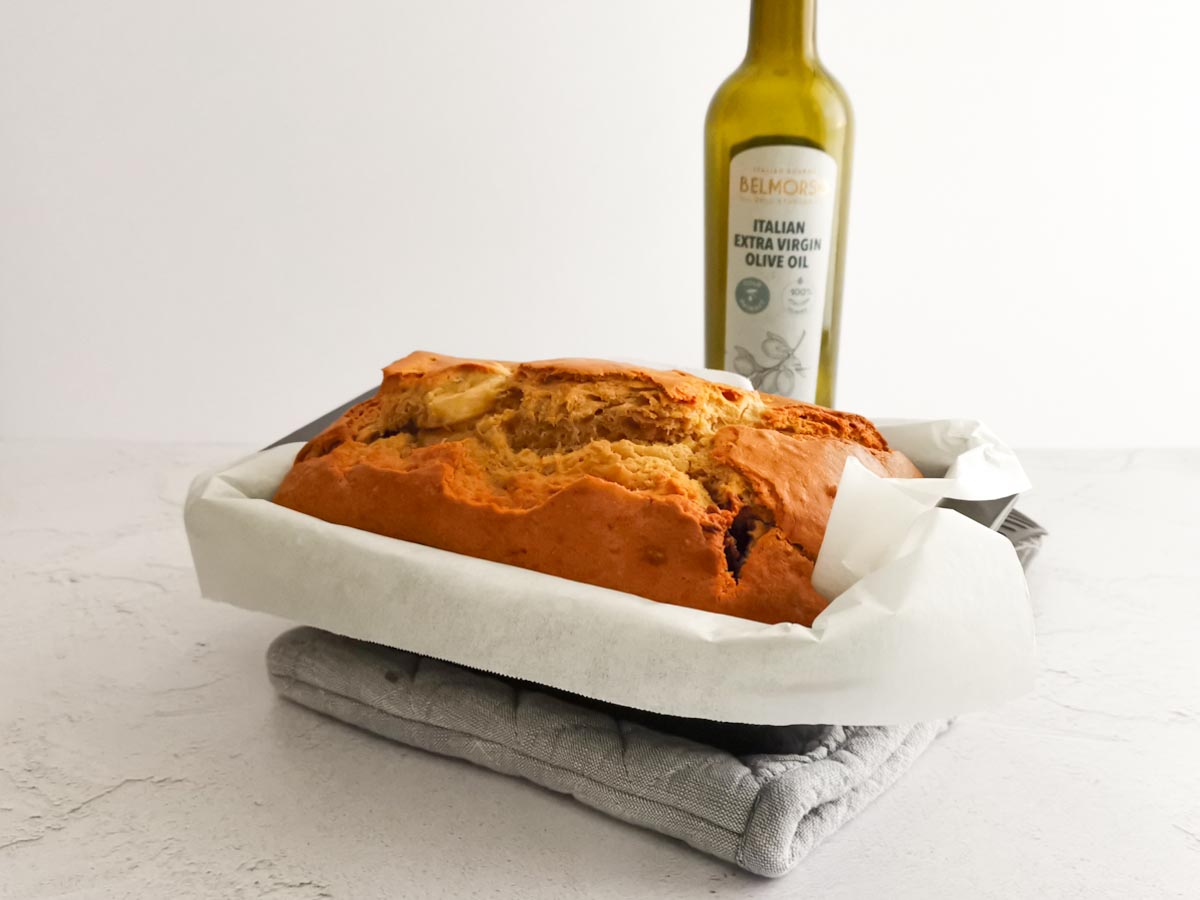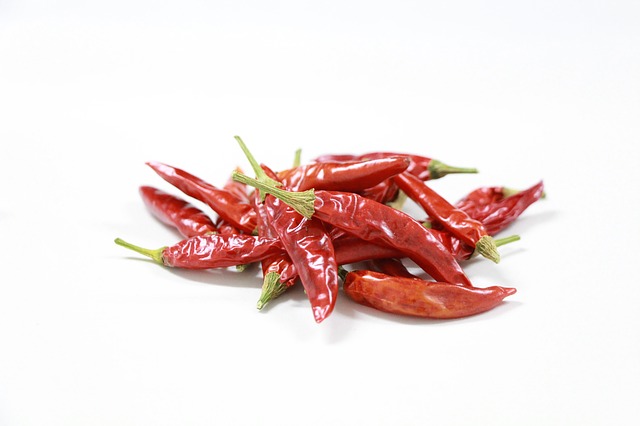
The Dinette Teller – 34. Spice up your life with Chilli Pepper!

Chilli Pepper Species
More than 3000 species of chilli pepper exists in Nature. The most famous species are; capsicum annum, frutescens, Chinese, baccatum, and capsicum pubescens.
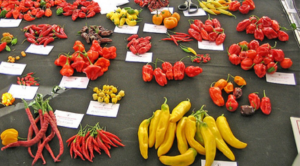
The most widespread capsicum are:
- Common Chilli: the most common in England. It is not too spicy and of moderate dimension. Generally around 5 cm in length
- Cayenna Peppers: a type of common chilli with a higher level of spiciness. It is thinner and more elongated in shape, reaching 10cm in length.
- Satana Kisses: they have a cherry like a shape. Perfect to be stuffed, they represent one of the most common species in the South of Italy.
- Jalapeno: little Mexican chilli pepper with a moderate level of spiciness. Because more flavourful, people usually eat it when green and still unripe. It is very versatile and delicious.
- Poblan: one of the most renowned Mexican chillies. It looks like a tiny sweet capsicum, but spicier. Usually harvested when still unripe at the peak of crunchiness.
- Habanero: the variety Red Savina is the spiciest capsicum in the World until 2006. It has a spiciness of 557 million SU. There are other varieties: yellow, orange, white, brown. All of them are unbelievably spicy.
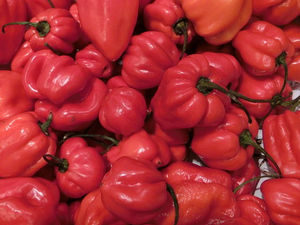
The Scoville Scale
To measure the spiciness level of the different species of chilli capsicum it is often used the Scoville Scale, which goes from 0 to 10. The Scoville Units (SU) measure the concentration of capsain, which goes from 0 to 16 million!
To have some examples, the common chilli reaches a value of 5 thousand SU, the Cayenna one 50.000 SU, and the Habanero achieves 600.000 SU!

How to grow Chilli Capsicum
- Choose a 20-40cm diameter vase. Put some potsherds at the bottom to allow a good drainage.
- Use a good fertilizer.
- Place the plant in the vase.
- Put the vase in a well-lightened area (at least 6 hours of sunshine per day).
- Water the plant only when the fertilizer on the surface is dried.
- Fasten the trunk to a piece of wood when it reaches over 35cm of height.
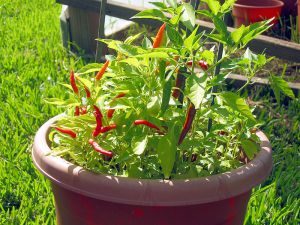
Curiosities about Chilli Peppers
Capsaicin is basically the trick of Mother Nature to safeguard the chilli pepper plant. In fact, the spiciness kept at a distance the mammals as they would have eaten all the seeds, avoiding the reproduction of the chilli capsicum.
On the contrary, since birds are devoid of spiciness receptors, they are immune to the effects of the capsaicin. The seed is not destroyed by the digestive system of the birds, so they can be scattered around through the bird’s excrements.
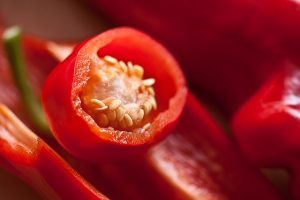
The spiciest variety of chilli pepper is the Indian Naga Jolokia with its 855.000 SU. It is illegal to sell it because of being considered a real instrument of torture.
Tips For Salvaging Too-Spicy Foods
Contrary to popular belief, since the capsicum is only soluble in alcohol or fat (especially the casein), it is useless to drink water to lessen its spiciness. For this reason, it can be useful to drink a glass of wine or milk, eat cheese or a yoghurt sauce.

Chilli Peppers Properties
Thanks to the substances contained in the chilli capsicum, it has many healthy properties.
Firstly, the capsicum is not only the “burning” element, it is also a rubefacient substance; this means that it improves the blood flow, stimulating the skin flushing. Moreover, it stimulates the combustion of fat, and it lessens the levels of the hormone “grelina”, which makes us hungry. So, it is also of help in losing weight!

It is rich in vitamins (C, E, K, B, A) and mineral salts (calcium, copper, potassium, carotenoids, and lecithin). There is a great amount of vitamin C. For example, 100gr of chilli pepper contains 229 mg of vitamin C against the 50 gr of the oranges!
These are some of the positive effects that this spice has:
-
- Improves the blood flow
- Improves the digestive tract motility
- Reduces the cholesterol levels in the blood
- Antioxidant
- Prevents from infectious diseases
- Stimulates the health of skin and other tissues, and it acts against muscles aches and arthritis
- Improves the metabolism
- Antibacterial action
- Antihistaminic
However, the abuse of this product could damage the gastric tissue, leading to ulcer, gastroenteritis, cystitis, and haemorrhoids. So, don’t exaggerate!
Spice up your life!
Chilli peppers can be used fresh, stored dried, as entire, minced, and even as a powder! They are delicious to give a boost of taste to your dishes, just by frying some of them in oil before adding other ingredients in the pan or just sprinkling the powder upon your favourite meal!
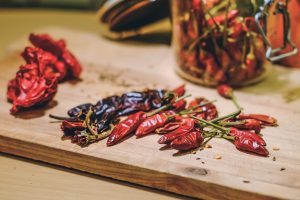
If you like spicy dishes, there is a huge variety of products of which you should definitely take advantages.
The Pronto-Ready Spaghetti has evolved from a famous Italian pasta dressing recipe “Spaghetti, Garlic, Olive Oil and Hot Chilli”, with the addition of sun-dried tomatoes, which makes the taste perfect, not too hot, but just right. Heat this sauce slowly in a saucepan to toss your favourite pasta shape and serve hot!
It is also great for meat and fish marinades, to spread on tarallini and bruschetta, and as a dip for party finger food.
For pasta-lovers, you should know that one the most famous Italian sauces is the Arrabbiata Pasta Sauce: a tomato based sauce with a spicy kick. The name literally means ‘angry sauce’ because of the spiciness of the peppers.

If you are in the mood for something spicier, try our Hot Chilli Peppers Spread created for the Chilli Lovers. It is the perfect combination of sweet red and hot peppers, leaving a warm aftertaste. It is just perfect alone or mixed with other sauces. Use it in the same ways than before… just put it everywhere to give a bursting boost of taste!
Other great ideas are the Stuffed Chilli with Olive and Anchovy and the Stuffed Chilli with Tuna & Vegetables. They are perfect to be eaten as a snack or as part of the main meal.
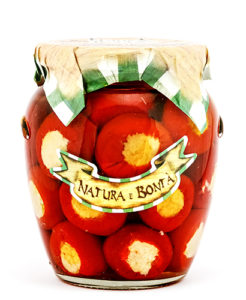
So, what are you waiting for? Spice up your life with Chilli Peppers!



